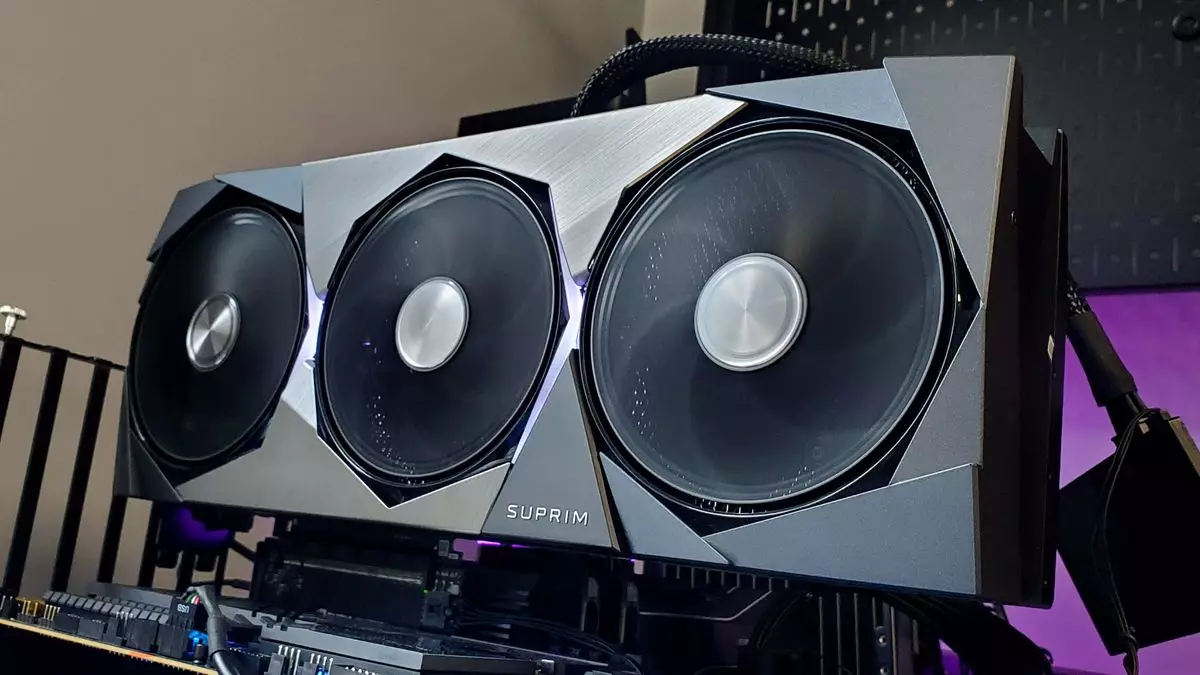The recent launch of Nvidia’s RTX 50-series graphics cards has been nothing short of underwhelming, to say the least. Described by many as a colossal disappointment, the anticipation surrounding these new GPUs turned to frustration as consumers faced sky-high prices and a scarcity of stock. The performance metrics touted by Nvidia, which were meant to dazzle enthusiasts, seem more like hollow promises when scrutinized under the harsh light of reality. With a strong sentiment of skepticism now prevailing, the announcement of a price reduction for the RTX 50-series seems almost paradoxical. Is this a genuine effort to appease dissatisfied customers, or merely a superficial attempt to regain consumer confidence?
Price Adjustments: A Mixed Bag
Reports have emerged from sources like VideoCardz detailing the price cuts for the Founders Edition models in Europe and the UK, but this data comes with a multitude of caveats. These price reductions affect only specific models—primarily the RTX 5070, RTX 5080, and RTX 5090. The notable omission of the RTX 5070 Ti, as it has no Founders Edition variant, raises questions about Nvidia’s strategy. In Germany, for example, reductions of approximately 4.3% to 4.6% align closely with the recent depreciation of the U.S. dollar. However, these adjustments do little to reflect a broader shift in market conditions or truly enhance affordability for the average consumer.
In the UK, the new pricing configuration tells a similar tale: modest decreases for certain models, with the RTX 5070 dropping from £539 to £529, the RTX 5080 from £979 to £949, and the RTX 5090 from £1,939 to £1,889. Nevertheless, the RTX 5070 Ti remains stagnant at £729, underscoring the paradox of an initiative claiming to reduce prices in an environment where availability is alarmingly low. With consumers greeted by “out of stock” notifications more often than not, the question of how meaningful these price adjustments truly are persists.
Supply Chain Woes: A Persisting Nightmare
While Nvidia reassures investors with proclamations of “strong sequential growth in Q1 as supply increases,” the reality on the ground tells a different story. The promised supply that was anticipated has yet to materialize, leaving consumers in disbelief as they comb through empty retail shelves and inflated prices from third-party suppliers. It’s baffling to witness a market so skewed; even when the MSRP seems appealing, the actual purchasing experience often devolves into a futile endeavor.
Interestingly, the competitive landscape isn’t helping Nvidia, either. AMD has seemingly made strides in the graphics card arena with reports suggesting they’ve moved over 200,000 units of their RX 9070 and RX 9070 XT cards. Yet, as is common across the industry, consumers are similarly confronted with limited stock and elevated prices. Such a paradoxical situation across both major GPU players casts a long shadow over an already beleaguered market.
A Question of Value and Trust
Amidst the spectacle of fluctuating prices and escalating frustrations, a salient question emerges: what constitutes value for consumers in today’s GPU market? Price cuts announced in isolation can’t mask the larger issues of scarcity and affordability. The Nvidia RTX 50-series could have been a game-changer, but the execution—largely marred by logistics and pricing tactics—leaves a lingering feeling of unfulfilled potential. It’s crucial now more than ever for predictive analytics and supply chain transparency to come into play, allowing consumers to make informed purchasing decisions rather than gambles on what is available.
As we observe these developments, the power of the consumer voice remains pivotal. While price cuts serve as a signal of willingness to adapt, the effectiveness of these measures will ultimately depend on Nvidia’s ability to address supply chain inconsistencies and restore faith among gamers and PC builders alike. Without an overhaul in approach, Nvidia may continue to struggle against the backdrop of increasing competition and consumer disillusionment in an already fractured market.


Leave a Reply